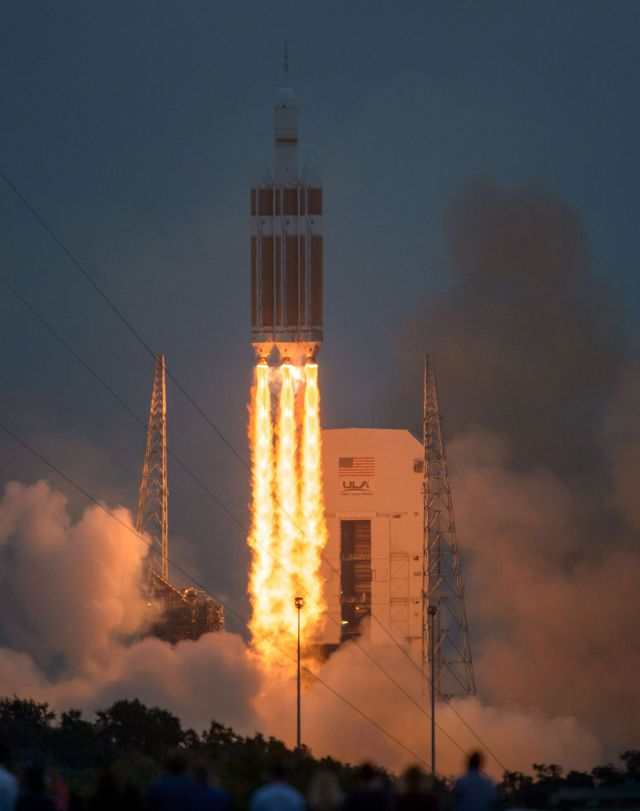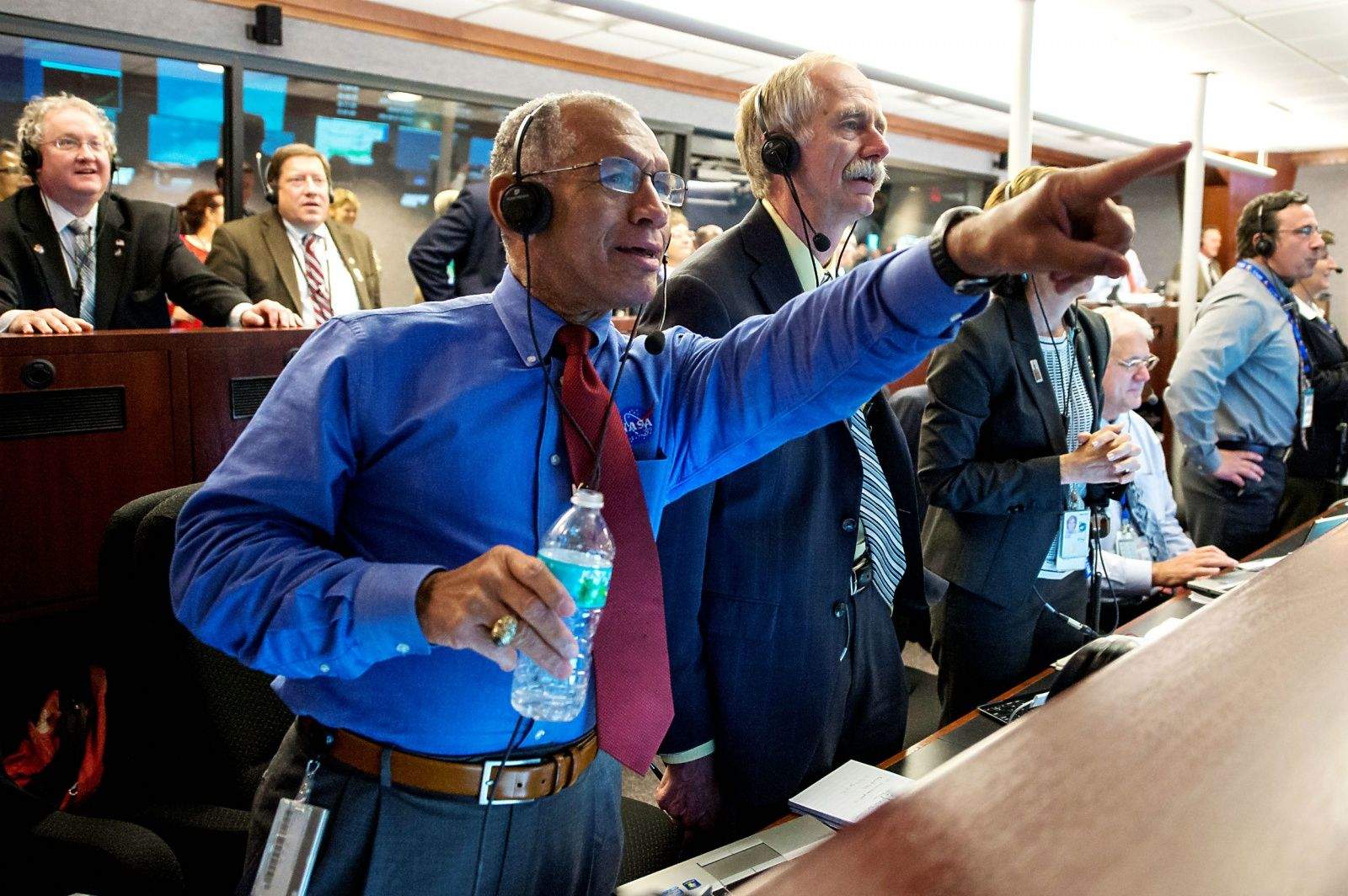The only thing missing from Friday’s Orion test flight was a black-and-white live stream and the voice of Walter Cronkite calling the moment of the capsule’s splashdown in the Pacific Ocean.
Orion may be the future of deep-space travel, with ambitious missions planned for an asteroid in the next decade and eventually Mars, but the event had a nostalgic feel, like a 1960s or ’70s living room with all eyes on a black-and-white television set.
NASA called the unmanned test mission “flawless” and flight director Mike Sarafin said it was a great day for America.
After a day’s delay with technical glitches, the Orion spacecraft aboard a new Delta IV Heavy rocket left the launch pad in Cape Canaveral, Fla., just after 7 a.m. Eastern. After two orbits of Earth, the cone-shaped capsule had an Apollo-like splashdown with parachutes slowing it to a soft landing 600 miles southwest of San Diego at 11:29 a.m.
“While this mission was unmanned, we were all aboard Orion,” Sarafin said.
LIVE NOW: Watch our #Orion post-mission news briefing with the latest from the mission
https://t.co/6XtjOi1yJo pic.twitter.com/ZAlB8v3ZsU
— NASA (@NASA) December 5, 2014
Orion seemingly passed the nail-biting re-entry phase when controllers in Houston endured a brief communications blackout while Orion’s heat shield withstood 4,000 degrees F on its return.
Space geeks across space travel generations were treated to touches of the past. Seeing the Orion capsule bobbing in the ocean, with helicopters above and a ship racing to retrieve it, brought Apollo missions to mind.
Fans of the space shuttle once again saw Florida skies lit up with big booster rockets.
Even the technology is a nod to the past. The capsule, very Apollo-looking, the heat tiles a technology transferred from the shuttle.
The much-heralded dashboard for the astronauts – up to six can fly in the current design – has a skeuomorphic design, with a user interface of old-fashioned levers and switches that appear virtually on glass. NASA says the class cockpit jettison’s the weight of switches, wires and circuitry while maintaining the familiar look of knobs and buttons.
NASA and its commercial partners, including Orion builders Lockheed Martin, will use the data accumulated during Friday’s test to push future designs and builds of Orion, including the construction of more powerful Heavy rockets.
In the meantime, NASA better get to work writing a Neil Armstrong-esque declaration for the first astronauts who set foot on an astroid or Mars.



